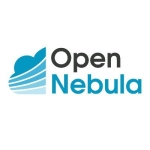We use it for analytics and metrics of the system. We've had it installed for about a year but have really been using it just within the last month. We're still discovering the power behind it and what it can do for us.
It has helped to reduce time to troubleshoot issues and improved quality of service. As far as showing us where the problems are, what's useful is that it gives us suggested solutions to fix them, so that's helpful.
The most valuable features are the health tree and the alerts that tell us what's going on from a glance at the dashboard.
One to three years.
It's scalable. We can add the Management Packs which have helped us. For example, we've added UCS Management Packs and that's been helpful.
We used technical support on a problem we were having when we did an upgrade, and when we had an issue with the integration of Log Insight. Technical support was great.
Definitely utilize any training resources you can find so you understand the product's power and what it can do. Trying to figure it out on your own is not so easy.
It's mostly user-friendly and intuitive. They're improving their dashboards which makes it a lot easier. Sometimes, drilling down and trying to find the exact thing you're looking for can prove challenging at first, but it's getting better.
Regarding cost savings through higher capacity utilization, we haven't seen that so much, but we're running pretty lean. It even tells us that now, so we didn't have a lot of capacity over-use.
I think it's a good product. I'm sure there's room for improvement: integration with some of the other things. I can't really say it's the best product that I've ever seen, but it's doing what we need it to do right now.















